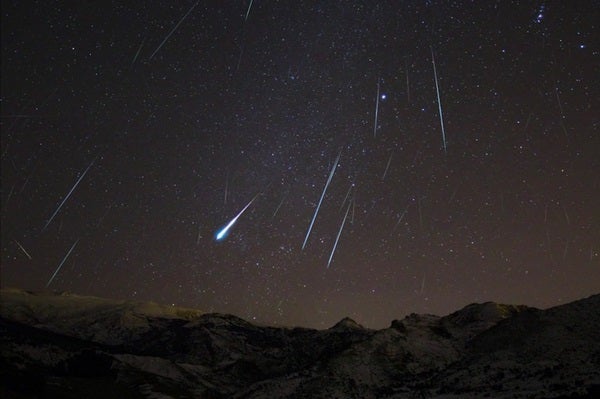The Geminid meteor shower peaks tonight under nearly ideal conditions. The waxing crescent Moon sets around 10:30 p.m. local time, leaving the rest of the night Moon-free.
Observers under a clear dark sky can expect to see up to 120 meteors per hour — an average of two per minute.
The meteors appear to radiate from a spot just north of Castor, the bright star in the northern part of the constellation Gemini the Twins. This region passes nearly overhead from mid-northern latitudes around 2 a.m. local time, although conditions remain excellent from the time the Moon sets until morning twilight commences.
The Geminids result from the mysterious asteroid 3200 Phaethon, which, thanks to periodic heating from the Sun, has left a trail of material in its orbit.
As the Earth passes through the debris-laden orbit of Phaethon, small grains of dust blaze through our atmosphere at about 80,000 miles per hour (130,000 kph), brightly disintegrating along the way.
This time lapse of the 2017 Geminid meteor shower was taken in Sierra Nevada, Granada. In just 3 hours, the photographer captured more than 100 bright meteors.
Timelapse by Zerjillo on Vimeo, music by Scott Holmes
For more quick and easy observing tips, visit our weekly guide: The sky this week for December 7 to 16.










